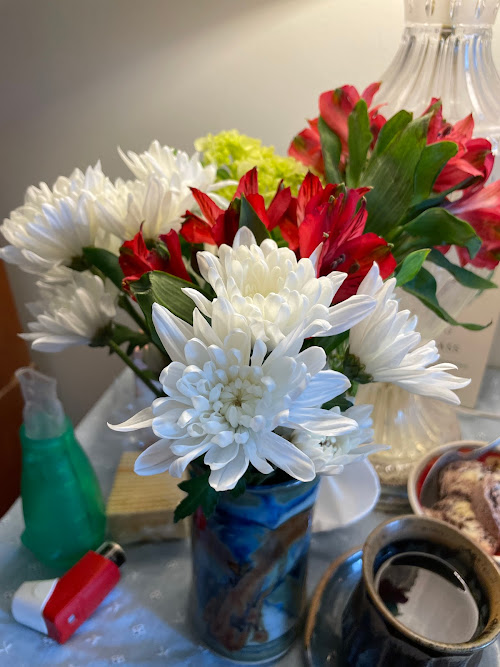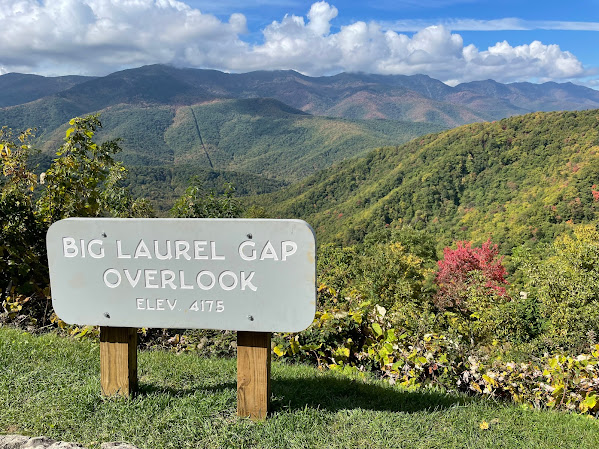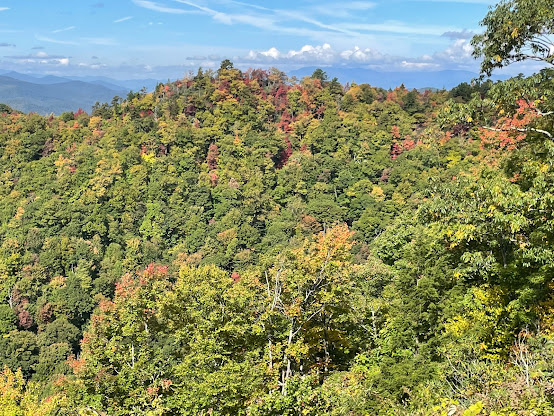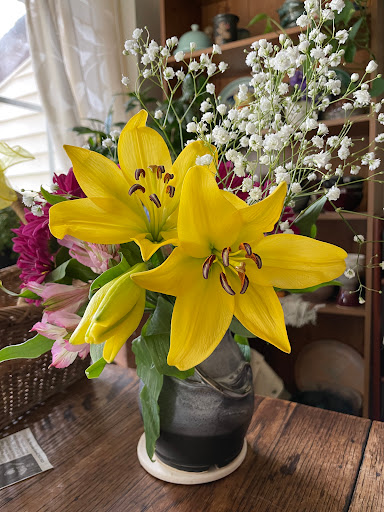(Not so) Brief History of Samhain and Halloween
October 31st – November 1st
The word Samhain in Gaeilge or Samhuinn/Samhainn in Scots Gaelic is pronounced sow-wen. Samhain means ‘November’ and likely stems from old Irish meaning ‘summer’s end’. It is also called Nos Galan-gaeaf or ‘Night of the Winter Calends’ in Welsh.
Introduction and History

This various god and goddess symbolism makes sense considering the darker elements of the female personas of the Morrígan and the Cailleach and being associated with death, fate and land sovereignty. In Irish mythology, The Morrígan and the Dagda have ritual sex the week during Samhain to purportedly discuss the continuing prosperity, safety and well being of their tribe, the Tuatha Dé Danann. This coupling reminds us again of the marriage between the land goddess and the sun god, of which their fruits (child) would be sown not coincidentally nine months later at the harvest festival of Lughnasadh. This symbolic coupling was carried out in ritual form by the ancient kings of Ireland as well. Angus Og may have been associated due to the nature in which he discovered his one true love on Samhain. With the help from his parents, the Dagda and Bóinn, he rescues her, they shape shift into two swans and fly away together singing beautiful songs that could lull anyone to sleep that heard them in the Dream of Angus Og. It was also suggested in the Lebor Gabála Érenn that the airbe drūad, or ‘druid’s fence’, an invisible screen which protected certain privileged persons against wounding in battle would not work on Samhain and also lended to further reasoning not to leave one’s house. (3) Quite a few mythological battles were fought on or near Samhain such as the famous Battle of Magh Tuireadh and the Battle of Samhain. The Druids lit their sacred signal fires on the Hill of Ward in County Meath for Samhain while they were lit for Bealtaine at Uisneach. The druid Mog Ruith and his daughter Tlachtga, were well known and associated with starting the fire for Samhain from the Hill of Ward, the sacred center of the druids and it was said that ‘No fires were permitted to be lighted in Ireland but those obtained from the Druids at May and November, who delivered their sacred fire to the people with great incantations. (4) Although speculative, it’s possible that in a descending fashion, other central fires were lit in each locale. As was tradition, each house may have cleaned their fireplace and rekindled a new one sourcing from their local ‘need fire’ during this night but symbolically, it was rekindled from the central fire started by a head druid. I should add in regards to this father and daughter pair that it’s thought they were possibly made diminutive from a solar deity and goddess. Christian writers depicted Tlachtga as a druidess who was raped by three sons after which she went on to produce three sons and died in the birthing process. She was buried at the Hill of Ward, previously called the Hill of Tlachtga.(5)

“In Ireland, there was an old common saying “The blessing of Bel, and the blessing of Samhain, be with you,” that is, of the sun and of the moon.” – Lady Wilde, Ancient Legends, Mystic Charms and Superstitions of Ireland
Additionally, Samhain plays a role in other famous Irish tales such as The Boyhood Deeds of Fionn as well as the tale of Midhir and Etain. The Mound of Hostages near the Hill of Tara is specifically aligned with the Samhain sunrise. In Wales, the king of fairies, Gwyn ap Nudd with his hounds was leader of the wild hunt and it was thought that he rode out on Samhain night bringing bad luck, havoc and possibly death to those who saw him, capturing and taking them down to the Underworld. This tale along with the Irish Dullahan were likely inspiration for the tale of the headless horseman. Alexander Carmichael wrote in the Carmina Gadelica 2 that ‘Samhainn… was one of the seasons when innumerable mystic rites are practiced.” In Scotland, there was a demon or goblin that was known to steal babies or commit atrocities on Samhainn night called the Samhanach, a derivative from the word itself. Being that Samhain was possibly considered the beginning of the year as well as “thin” spiritually, divination may have been an important practice at this time. In the story of Fingin Mac Luchta of Munster, Ireland, he would visit a Druidess every Samhain who would relate all the future occurrences in the kingdom for the next twelve months. (6) In another reference to divination on Samhain, The Druid of Daithi went to the top of The Hill of the Druid, now Mullaroe in Sligo, and remained there all night from sundown until sunrise. When he woke and returned, he informed the king that the clouds had foretold he would conquer land in Alba, Britain and Gaul. (7) These are just two of many examples of divination occurring on or near Samhain by Druids or Druidesses. Quite a few herbal plants, trees or food items may have been associated with Samhain such as the apple, yew, aspen, corn, ivy, mugwort, mullein, hazel, wild garlic, elder, juniper, blackberry, rowan, vervain and oak to name just a few.

Halloween is another celebration related to Samhain and a tradition that masses of Irish emigrants brought with them to America, particularly during the manufactured famine when millions of Irish became homeless, in addition to being starved and were forcibly made to leave or left out of desperation. It is estimated that over 9 million Irish emigrated, approximately half of which came to America between 1800 and 1930. Halloween was treasured enough that it would not be left behind and it wasn’t long before it gained traction as a mainstream family tradition in America. Although it has become bastardized through commercialization, the essence of Samhain is still there in the holiday’s roots. On Samhain night it was bad luck to go out of your home but if you did have to go, you had better wear a disguise to blend in with the evil spirits roaming about, which could have been as simple as a shirt over your head. In Ireland and Scotland, this would have been called ‘guising’ and dressing in costumes reminiscent of biddy boys, using straw, sheet coverings or their own creations. This evolved into dressing in full costume and going house to house to ask for an “offering” of candy which was in essence an act of pretending to be a ghost, spirit or witch that needed appeasing, lest you be tricked. Without a doubt, the most prominent symbols of Halloween are trick or treating, apples, turnips and Jack O’Lanterns. Originally, the Irish would have used turnips as offerings as well as to lay out milk. In Scotland, milk was also laid out for the cat-fiadhaich, Kellas cat or Cat Sith. (8) These were black cats thought to be witches that had the ability to turn into a cat nine times. Here, it was tradition again to leave an offering of milk in hopes the passing spirits would bless your home verses curse it if there were none. This may have also been where the folklore of a cat having nine lives as well as black cats being the familiars of witches originated from. (9) When Irish emigrants came to America, they transitioned to pumpkin carving simply because they were readily available here, bigger and easier to carve.
In the spirit of this being a time when nature was and is dying literally and allegorically, those that had passed away were honored as well and the festival was Christianized. Traditionally, an Irish feast called ‘dumb supper’ would be prepared and the family would leave a chair or multiple chairs out for their deceased loved ones who were thought to be visiting. They may have even fixed their deceased loved one’s favorite meal. Family may have frequented their ancestors grave sites and left offerings there as well. Funerals or ‘wakes’ were great social occasions and just as in ancient times, the deeds of loved ones are heralded and there is much love and commemoration during this time. The lives of our deceased ancestors continue to be honored and recognized at Samhain. This festival became the Christianized ‘All Saint’s Day’ which also commemorates important deceased figures. The essence of Samhain is one of honoring ancestors, retreating into the darker spaces and fears of our being, to reflect, rest and regain our courage and perseverance to withstand the coming winter and the darker elements of life.

Isla MacKinnon






























